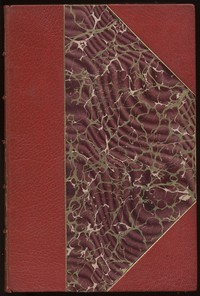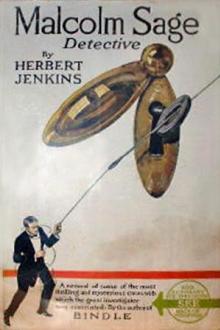Waverley; Or, 'Tis Sixty Years Since, Walter Scott [important of reading books TXT] 📗

- Author: Walter Scott
Book online «Waverley; Or, 'Tis Sixty Years Since, Walter Scott [important of reading books TXT] 📗». Author Walter Scott
[* Abbotsford Manuscripts. Hogg averred that nobody either read or wrote poetry after Sir Walter took to prose.]
Thus Scott’s own taste was catholic: and in this he was particularly unlike the modern novelists, who proclaim, from both sides of the Atlantic, that only in their own methods, and in sharing their own exclusive tastes, is literary salvation. The prince of Romance was no one-sided romanticiste; his ear was open to all fiction good in its kind. His generosity made him think Miss Edgeworth’s persons more alive than his own. To his own romances he preferred Mrs. Shelley’s “Frankenstein.”[*] As a critic, of course, he was mistaken; but his was the generous error of the heart, and it is the heart in Walter Scott, even more than the brain, that lends its own vitality to his creations. Equipped as he was with a taste truly catholic, capable in old age of admiring “Pelham,” he had the power to do what he calls “the big bow-wow strain;” yet he was not, as in his modesty he supposed, denied “the exquisite touch which renders ordinary commonplace things and characters interesting, from the truth of the description and the sentiment.”[**]
[* Scott reviewed “Frankenstein” in 1818. Mr. Shelley had sent it with a brief note, in which he said that it was the work of a friend, and that he had only seen it through the press. Sir Walter passed the book on to Mr. Morritt, who, in reply, gave Scott a brief and not very accurate history of Shelley. Sir Walter then wrote a most favourable review of “Frankenstein” in “Blackwood’s Magazine,” observing that it was attributed to Mr. Percy Bysshe Shelley, a son-in-law of Mr. Godwin. Mrs. Shelley presently wrote thanking him for the review, and assuring him that it was her own work. Scott had apparently taken Shelley’s disclaimer as an innocent evasion; it was an age of literary superscheries.—Abbotsford Manuscripts.]
[** Journal, March 14, 1826.]
The letter of Rose Bradwardine to Waverley is alone enough to disprove Scott’s disparagement of himself, his belief that he had been denied exquisiteness of touch. Nothing human is more delicate, nothing should be more delicately handled, than the first love of a girl. What the “analytical” modern novelist would pass over and dissect and place beneath his microscope till a student of any manliness blushes with shame and annoyance, Scott suffers Rose Bradwardine to reveal with a sensitive shyness. But Scott, of course, had even less in common with the peeper and botanizer on maidens’ hearts than with the wildest romanticist. He considered that “a want of story is always fatal to a book the first reading, and it is well if it gets a chance of a second.” From him “Pride and Prejudice” got a chance of three readings at least. This generous universality of taste, in addition to all his other qualities of humour and poetry, enabled Scott to raise the novel from its decadence, and to make the dry bones of history live again in his tales. With Charles Edward at Holyrood, as Mr. Senior wrote in the “Quarterly Review,” “we are in the lofty region of romance. In any other hands than those of Sir Walter Scott, the language and conduct of those great people would have been as dignified as their situations. We should have heard nothing of the hero in his new costume ‘majoring afore the muckle pier-glass,’ of his arrest by the host of the Candlestick, of his examination by the well-powdered Major Melville, or of his fears of being informed against by Mrs. Nosebag.” In short, “while the leading persons and events are as remote from ordinary life as the inventions of Scudéry, the picture of human nature is as faithful as could have been given by Fielding or Le Sage.” Though this criticism has not the advantage of being new, it is true; and when we have added that Scott’s novels are the novels of the poet who, next to Shakspeare, knew mankind most widely and well, we have the secret of his triumph.
For the first time in literature, it was a poet who held the pen of the romancer in prose. Fielding, Richardson, De Foe, Miss Burney, were none of them made by the gods poetical. Scott himself, with his habitual generosity, would have hailed his own predecessor in Mrs. Radcliffe. “The praise may be claimed for Mrs. Radcliffe of having been the first to introduce into her prose fictions a beautiful and fanciful tone of natural description and impressive narrative, which had hitherto been exclusively applied to poetry. . . . Mrs. Radcliffe has a title to be considered the first poetess of romantic fiction.” When “Guy Mannering” appeared, Wordsworth sneered at it as a work of the Radcliffe school. The slight difference produced by the introduction of humour could scarcely be visible to Wordsworth. But Scott would not have been hurt by his judgment. He had the literary courage to recognize merit even when obscured by extravagance, and to applaud that in which people of culture could find neither excellence nor charm. Like Thackeray, he had been thrilled by Vivaidi in the Inquisition, and he was not the man to hide his gratitude because his author was now out of fashion.
Thus we see that Scott, when he began “Waverley” in 1805, brought to his labour no hard-and-fast theory of the art of fiction, but a kindly readiness to be pleased, and to find good in everything. He brought his wide knowledge of contemporary Scottish life “from the peer to the ploughman;” he brought his well-digested wealth of antiquarian lore, and the poetic skill which had just been busied with the “Lay of the Last Minstrel,” and was still to be occupied, ere he finished his interrupted novel, with “Marmion,” “The Lady of the Lake,” “Rokeby,” and “The Lord of the Isles.” The comparative failure of the last-named no doubt strengthened his determination to try prose romance. He had never cared much for his own poems, he says, Byron had outdone him in popularity, and the Muse—“the Good Demon” who once deserted Herrick—came now less eagerly to his call.
It is curiously difficult to disentangle the statements about the composition of “Waverley.” Our first authority, of course, is Scott’s own account, given in the General Preface to the Edition of 1829. Lockhart, however, remarks on the haste with which Sir Walter wrote the Introductions to the magnum opus; and the lapse of fifteen years, the effects of disease, and his habitual carelessness about his own works and mode of working may certainly to some extent have clouded his memory. “About the year 1805,” as he says, he “threw together about one third part of the first volume of ‘Waverley.’” It was advertised to be published, he goes on, by Ballantyne, with the second title, “’T is Fifty Years since.” This, obviously, would have made 1755 the date of the events, just as the title “’T is Sixty Years since” in 1814 brought the date of the events to 1754. By inspecting the water-mark of the paper Lockhart discovered that 1805 was the period in which the first few chapters were composed; the rest of the paper was marked 1814. Scott next observes that the unfavourable opinion of a critical friend on the first seven chapters induced him to lay the manuscript aside. Who was this friend? Lockhart thinks it was Erskine. It is certain, from a letter of Ballantyne’s at Abbotsford,—a letter printed by Lockhart, September 15, 1810,—that Ballantyne in 1810 saw at least the earlier portions of “Waverley,” and it is clear enough that he had seen none of it before. If any friend did read it in 1805, it cannot have been Ballantyne, and may have been Erskine. But none of the paper bears a water-mark between 1805 and 1813, so Scott must merely have taken it up, in 1810, as it had been for five years. Now Scott says that the success of “The Lady of the Lake,” with its Highland pictures, induced him “to attempt something of the same sort in prose.” This, as Lockhart notes, cannot refer to 1805, as the “Lady of the Lake” did not appear till 1810. But the good fortune of the “Lady” may very well have induced him in 1810 to reconsider his Highland prose romance. In 1808, as appears from an undated letter to Surtees of Mainsforth (Abbotsford Manuscripts), he was contemplating a poem on “that wandering knight so fair,” Charles Edward, and on the adventures of his flight, on Lochiel, Flora Macdonald, the Kennedys, and the rest. Earlier still, on June 9, 1806, Scott wrote to Lady Abercorn that he had “a great work in contemplation, a Highland romance of love, magic, and war.” “The Lady of the Lake” took the place of that poem in his “century of inventions,” and, stimulated by the popularity of his Highland romance in verse, he disinterred the last seven chapters of “Waverley” from their five years of repose. Very probably, as he himself hints, the exercise of fitting a conclusion to Strutt’s “Queenhoo Hall” may have helped to bring his fancy back to his own half-forgotten story of “Waverley.” In 1811 Scott went to Abbotsford, and there, as he tells us, he lost sight of his “Waverley” fragment.[*] Often looked for, it was never found, till the accident of a search for fishing-tackle led him to discover it in the drawer of an old bureau in a lumber-garret. This cabinet afterwards came into the possession of Mr. William Laidlaw, Scott’s friend and amanuensis, and it is still, the Editor understands, in the hands of Miss Laidlaw. The fishing-tackle, Miss Laidlaw tells the Editor (mainly red hackles, tied on hair, not gut), still occupies the drawer, except a few flies which were given, as relics, to the late Mr. Thomas Tod Stoddart. In 1813, then, volume i. of “Waverley” was finished. Then Scott undertook some articles for Constable, and laid the novel aside. The printing, at last, must have been very speedy. Dining in Edinburgh, in June, 1814, Lockhart saw “the hand of Walter Scott” busy at its task. “Page after page is finished, and thrown on the heap of manuscripts, and still it goes on unwearied.”[**] The book was published on July 7, the press hardly keeping up with the activity of the author. Scott had written “two volumes in three summer weeks” and the printers had not shown less activity, while binders and stitchers must have worked extra tides.
[* Mr. R. P. Gillies says that in 1811 “Waverley, in three volumes, had been announced by John Ballantyne, and a sheet or two set in types” (Recollections of Sir Walter Scott, p 204).]
[** Lockhart, iv, 172.]
“Waverley” was published without the Author’s name. Scott’s reasons for being anonymous have been stated by himself. “It was his humour,”—that is the best of the reasons, and the secret gave him a great deal of amusement. The Ballantynes, of course, knew it from the first; so did Mr. Morritt, Lady Louisa Stuart, and Lord and Lady Montague,





Comments (0)